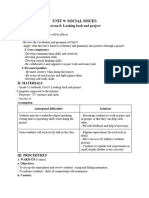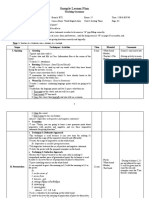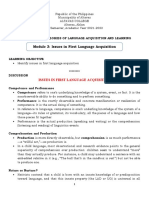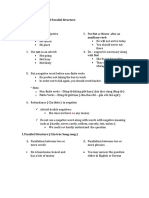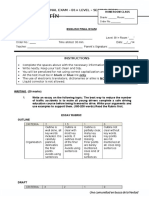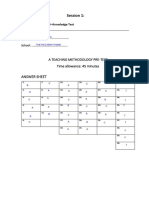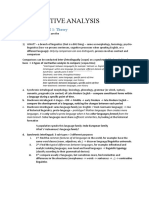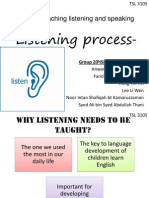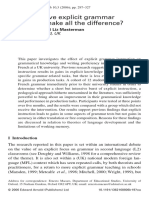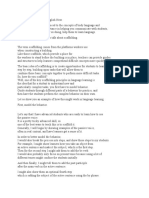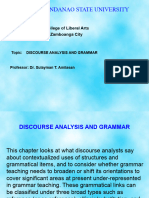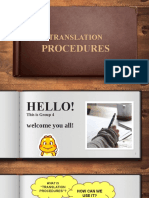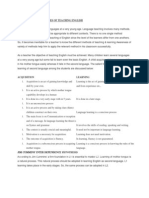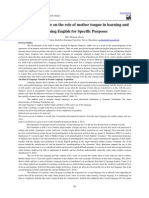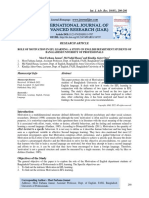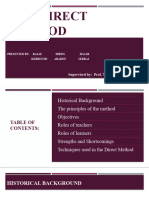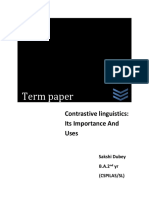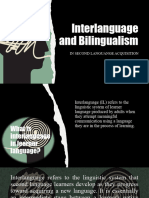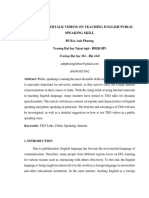0% found this document useful (0 votes)
719 views11 pagesGrammar Translation vs. Direct Method
The Grammar Translation method and The Direct method of language teaching as given in Techniques and Principles of language teaching by Diane Larsen Freeman
Uploaded by
Batool ZaidiCopyright
© © All Rights Reserved
We take content rights seriously. If you suspect this is your content, claim it here.
Available Formats
Download as PPTX, PDF, TXT or read online on Scribd
0% found this document useful (0 votes)
719 views11 pagesGrammar Translation vs. Direct Method
The Grammar Translation method and The Direct method of language teaching as given in Techniques and Principles of language teaching by Diane Larsen Freeman
Uploaded by
Batool ZaidiCopyright
© © All Rights Reserved
We take content rights seriously. If you suspect this is your content, claim it here.
Available Formats
Download as PPTX, PDF, TXT or read online on Scribd
/ 11


